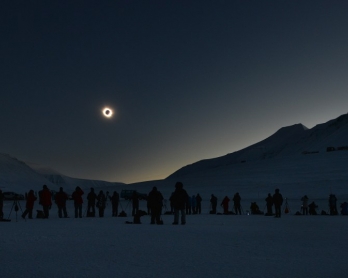Beauty unbound
Dikanas, Sweden -- I didn’t expect to find so much beauty. Photographing Sweden’s Sami reindeer herders was something that I’ve wanted to do for years, but never seemed to get around to. When I finally did, it was so much more spectacular -- and surprising -- than I imagined.
 (AFP / Jonathan Nackstrand)
(AFP / Jonathan Nackstrand)The Sami have lived in the northern parts of today’s Sweden, Norway, Finland and Russia for thousands of years, their way of life intimately tied to the reindeer that they follow throughout the year, going up higher with the animals in the summer and bringing them to lower ground in the winter. Their herding routes have often put them at odds with both landowners and mining and wind energy companies, so the Sami are quite wary of strangers and even more so of journalists.
 (AFP / Jonathan Nackstrand)
(AFP / Jonathan Nackstrand)When I finally set my mind on photographing their way of life, I sent emails to different Sami villages. In the end, Margaret from the village of Dikanas in Lapland got back in touch. She was very thorough in asking me what was the idea behind the pictures, what they would be used for. I told her that I wanted to simply show the Sami experience. After several back and forths setting the rules, she finally said yes.
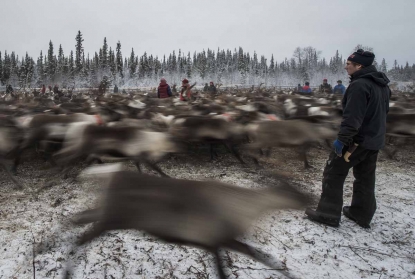 (AFP / Jonathan Nackstrand)
(AFP / Jonathan Nackstrand)I also had an ulterior motive -- in the olden days, the Sami would walk and ski with their reindeer as they went back and forth from their winter and summer grazing grounds. But today, the walking is not possible for the descent to warmer ground in the fall -- the winter temperatures now come later and the ground is soft, so the Sami use everything from helicopters to quads to herd the animals. I thought that if I could work with a village in the fall and show them that I had no bad intentions, I would build enough trust to accompany them on their journey in the spring, a longer trip that I expect to provide some really intimate and special shots.
I ended up spending three full days at a spot where two villages have around 10,000 reindeer between them.
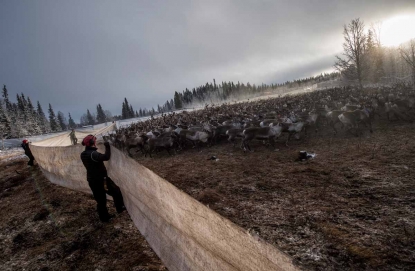 (AFP / Jonathan Nackstrand)
(AFP / Jonathan Nackstrand)At this part of the grazing cycle, the reindeer are herded down into one huge corral, where the calves are branded. Each family has its own brand. Afterwards, the animals are moved to a smaller corral, where each family takes its animals, to decide which ones will go to the lower plains for the winter and which ones will go to the slaughterhouse.
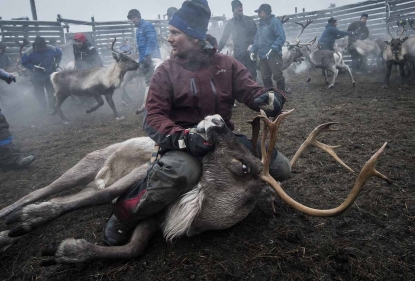 (AFP / Jonathan Nackstrand)
(AFP / Jonathan Nackstrand)Reindeer are a pillar of Swedish tradition, with their likeness appearing on everything from coffee mugs to calendars and their meat a very popular delicacy. And you always hear about reindeer herders. But even though I’ve always known about them and have seen plenty of pictures of them, I wasn’t really aware of what they do and how they do it.
Usually when you get someplace, it takes you a bit to get your bearings, so I wasn’t expecting to get great shots on my first day. It ended up being the best.
 (AFP / Jonathan Nackstrand)
(AFP / Jonathan Nackstrand)Margaret, my contact, explained to me what was going to happen -- the reindeer would come from over there, they would be corralled over here, etc. Then, all of the sudden, the ground began to shake. There were hundreds of reindeer, coming down a hill. I just followed the lead of the herders. When we reached the main place where the animals were going to be corralled, the sun started to appear. Everything just started to be so beautiful.
The reindeer, when they’re scared, they run in circles. So at this point, the sun is out, the animals are running in circles, kicking up dust. That, with the cold, gave the pictures a magic feel and created really fantastic moments for me to photograph. It just ended up being the most amazing day. Everything was just so beautiful. I can’t overemphasize that. It was just so beautiful.
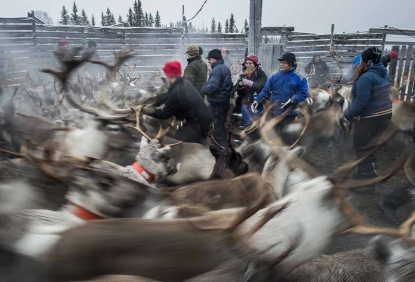 (AFP / Jonathan Nackstrand)
(AFP / Jonathan Nackstrand)I was on such a high. I didn’t realize that everything closed down at 5 pm, so I didn’t buy any food ahead of time. I was staying in this resort, they basically opened up one of the cabins for me. By the time I got back, everything was closed and I ended up without dinner. But I didn’t even really mind. Everything was so beautiful that I just kept on working off the high.
The herding has really changed over the years. Before, the Sami would accompany their animals from one grazing place to the next. The land would be frozen in November/December, so it was easy to cross the land anddik the numerous lakes dotting it. But today the temperatures are higher. Much of the land that has to be crossed on the way to winter grounds is a bog of mud, which is difficult for both animals and humans. So the Sami do it the modern way. They herd the animals up to a certain point and then they load them into pick-up trucks, about 250 animals in each vehicle, and drive them to their various winter grounds, some as far as 200 kilometers away in a journey that takes three to four hours.
(Winter grounds for the reindeer marked with stars)
In the spring they still do it the old-fashioned way, as the land is still frozen. Now that I have established a good working relationship with these villages, I will try to come back for the spring migration, which should be just fantastic.
Another modernity is how they herd them. Before they used to follow the herds on skis. With the appearance of snowmobiles, they began to use those. But snowmobiles don’t work in the mud, so for the fall migration, they use quad bikes and often a helicopter. They fly the helicopter very low and the noise is very efficient in herding the animals.
 (AFP / Jonathan Nackstrand)
(AFP / Jonathan Nackstrand)There were two things that struck me the most during my three days.. One was just how beautiful everything was. I just didn’t expect it to be so beautiful.
Another was just how difficult the work was. It’s basically cowboy work, but it’s not the American West, but the Nordic North. I really got a taste of it the second day, which ended up being the least productive for me. Instead I really got an idea of what the Sami have to go through.
 (AFP / Jonathan Nackstrand)
(AFP / Jonathan Nackstrand)I was on the back of a quad, trying to do a webclip. It was no use, as it was just too bumpy. At one point, we sank down into the mud. So we all got off, trying to get the quad out. Then my left foot sank down into it. I was wading in freezing cold mud. It took a minute and a half to get it out. Then the other one sank. The Sami around me were laughting. “Now you know a little bit of what we have to go through.”
This blog was written with Yana Dlugy in Paris.
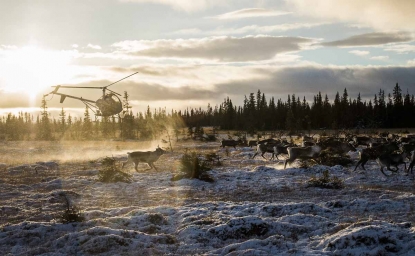 (AFP / Jonathan Nackstrand)
(AFP / Jonathan Nackstrand)





